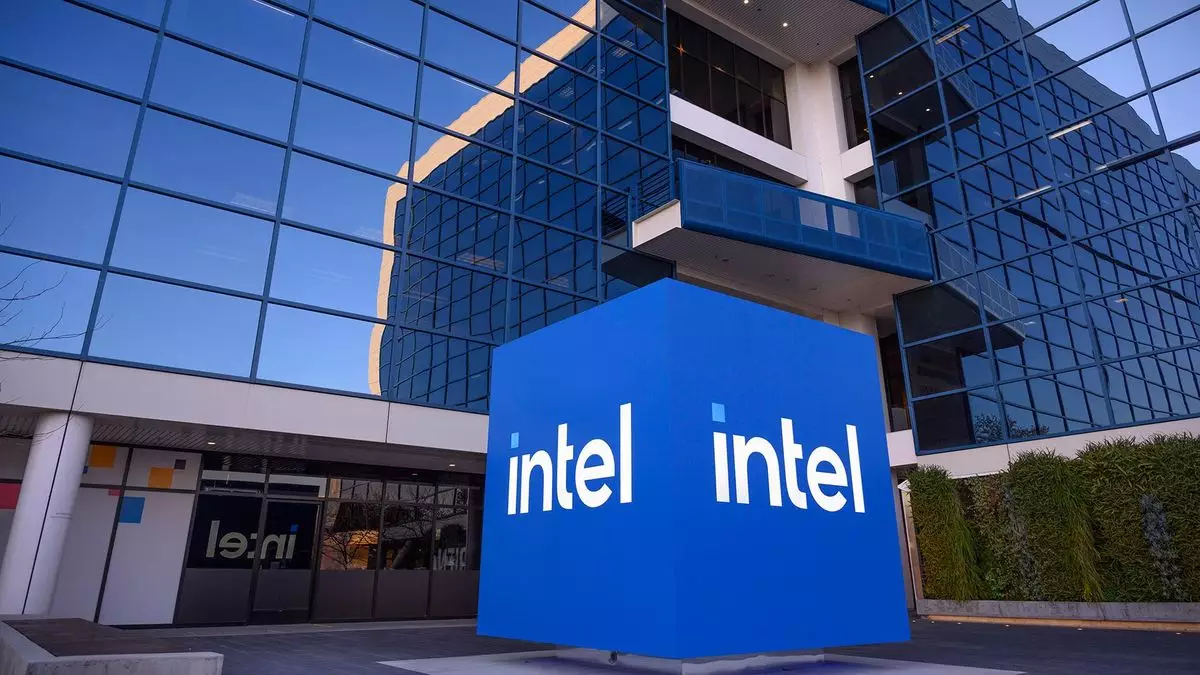The recent retirement of Pat Gelsinger has cast a shadow of uncertainty over Intel Corporation, particularly regarding its burgeoning division, Intel Foundry. In a landscape dominated by titans like TSMC, Intel seeks to assert its presence in the semiconductor manufacturing sector. However, the company’s evolving structure raises questions about the future of this strategic assets. During a discussion at the Barclays 22nd annual global technology conference, interim co-CEOs David Zinsner and Michelle Johnston shared insights that highlighted not only the operations of Intel Foundry but also the philosophical divide within the company.
The managerial transition within Intel appears to be pivotal at this moment. Zinsner characterized himself as primarily focused on the operational and financial mechanics of the organization, while Johnston, with her deep roots in product development, embodies the technical prowess necessary for innovation. This delineation comes to the forefront in discussions surrounding Intel Foundry. Zinsner’s commitment to maintaining customer communications emphasizes the pivotal role the foundry plays in the overall structure of the company, even as it operates distinctly from other segments.
Both leaders presented the intriguing concept of operational independence for Intel Foundry. Johnston explained that the business branches are already functioning independently, with distinct decision-making protocols for the Product and Foundry divisions. However, Zinsner was forthcoming about the company’s intention to establish a subsidiary for Intel Foundry. This strategic move suggests a commitment to a more structured and independent operational framework, even if complete separation remains an “open question.”
What does this potential split signify for the company? If realized, it might lead Intel Foundry to exist as an independent entity, potentially competing against other pure-play foundries in a highly complex and competitive market. Alternatively, the prospect of divesting Intel Foundry could create opportunities for other manufacturers, illustrating that the leadership is considering all avenues in response to changing market dynamics.
Intel’s situation is complicated by its recent string of technical issues, particularly concerning its 13th and 14th generation CPUs. These difficulties have sparked doubts about the company’s capacity to reclaim its status as a market leader, especially against competitors like Nvidia—whose ascent has further relegated Intel’s traditional market stronghold. Furthermore, the increasing reliance on TSMC for chip manufacturing among other companies has underscored the challenges Intel faces.
The company’s fate seems linked to its forthcoming 18A chip technology, which could serve as a pivotal moment in its competitive strategy. As Zinsner and Johnston navigate the transition in leadership and operational structures, the stakes for the success of 18A become increasingly significant. Failure to rally around this technology could gravely impact Intel’s standing in the industry, posing an existential threat to its future.
As the industry landscape undergoes transformations with increasing investor scrutiny and market pressure, Intel’s leaders bear the heavy responsibility of steering the company through uncharted waters. The conversation surrounding Intel Foundry isn’t just about independence or reliance; it’s about reassessing the very identity of Intel in the semiconductor space. The uncertainty surrounding its capabilities and strategic direction must be addressed to regain trust from investors and consumers alike.
While Zinsner and Johnston appear focused on establishing clear lines of operation within Intel, the lingering question concerning the future of Intel Foundry cannot be dismissed lightly. Strategic separation, complete or partial, could alter not just internal dynamics but also Intel’s position on the global stage. The challenge lies in balancing operational independence with cohesive corporate objectives, while artfully maneuvering through a fiercely volatile market.
The dialogue about Intel Foundry is emblematic of Intel’s broader challenges as it grapples with legacy issues, market advocacy, and technological resilience. As it stands on the brink of potential transformation, Intel must confront its past while forging a new path forward. The decisions made in the coming months could ultimately define not only the fate of Intel Foundry but also determine Intel’s place in the future of semiconductor manufacturing. The focus on innovation, operational definition, and strategic independence will be vital as Intel seeks to reclaim its reputation and stabilize its business model amidst fierce competition.

